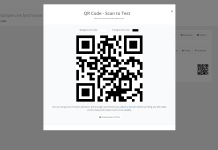Another reason for Chrome’s popularity is the customization it offers users. In this lesson, we’ll talk about the many great features of Chrome that you can modify, including Chrome’s startup options and the Chrome Web Store, which allows you to add applications, extensions, and themes to Chrome.
Choosing your startup options
To choose a homepage:
By default, Chrome will show the New Tab page whenever you start the browser. If you’d like to see a specific website each time you open your browser, like a news site or weather forecast, you can set that site as your homepage.
- Click the Chrome menu in the top-right corner of the browser, then select Settings.
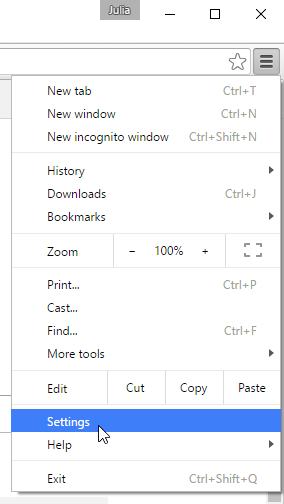
- The Settings tab will appear. Locate and click the check box next to Show Home button.
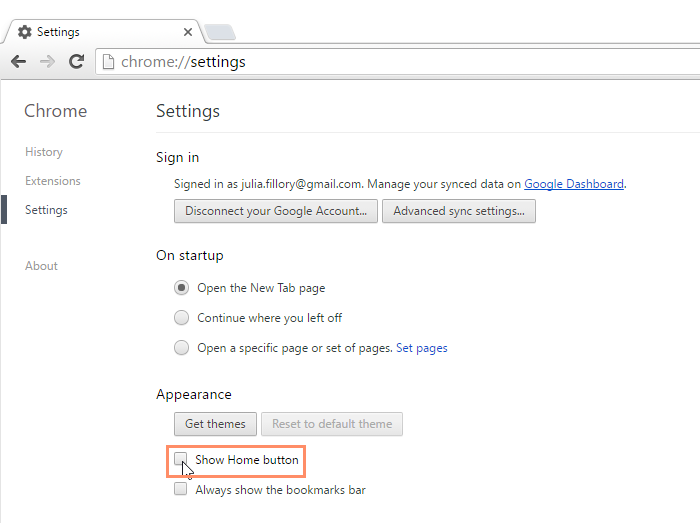
- By default, Chrome will open the New Tab page whenever you click the Home button. To choose a new homepage, click Change.
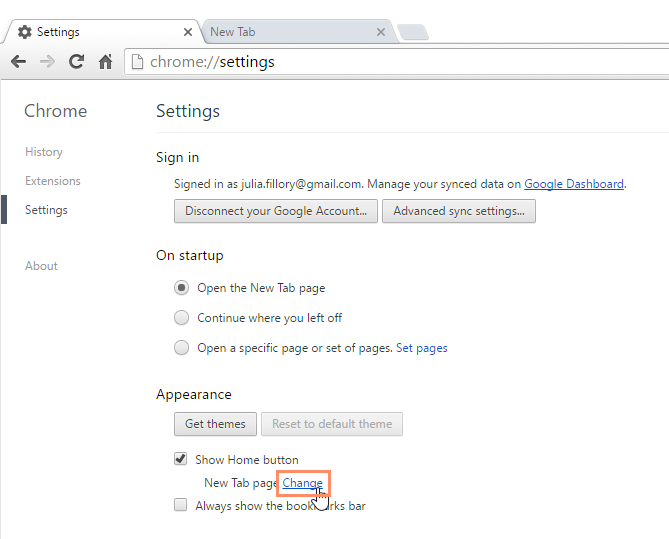
- A dialog box will appear. Select Open this page: and type a web address. In our example, we’ll type www.cnn.com.
- Click OK to continue.
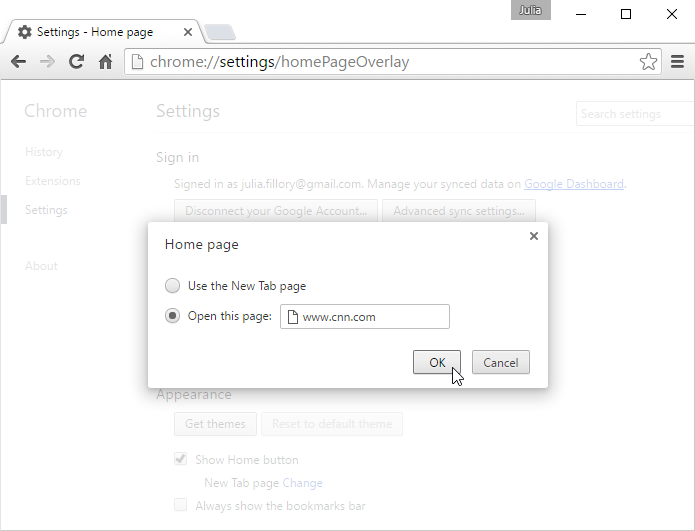
- The homepage will appear whenever you start Chrome. Click the Home button in the navigation bar to visit your homepage at any time.
If there are certain sites you open every time you start your browser, like your email or calendar, you can pin each page as a tab. Pinned tabs will open automatically whenever you open Chrome. Review our lesson on Browsing in Chrome to learn more about pinning tabs.

To set Chrome as the default browser:
If you would like to use Chrome as your only web browser, you can set it as the default browser on your computer. If you click a link in another program on your computer, like an email client, it will open in Chrome.
- Click the Chrome menu in the top-right corner of the browser, then select Settings.

- The Settings tab will appear. Scroll down and select Make Google Chrome the default browser. Any link you open on your computer will now open in Google Chrome.
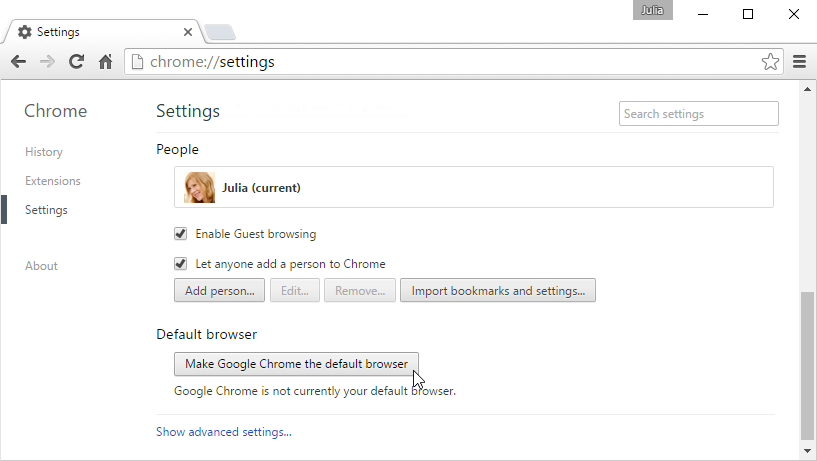
The Chrome Web Store
The Chrome Web Store allows you to download different web apps, extensions, and themes, which can make Chrome even more powerful and personal.
Apps
Web apps work just like software you might install on your computer, but they run through your browser instead of your operating system. Web apps range from simple tools like a calculator or notepad to complex applications like a photo editor or even a game!
To install an app:
- Navigate to https://chrome.google.com/webstore.

- The Chrome Web Store will appear. Click an app to learn more about it.
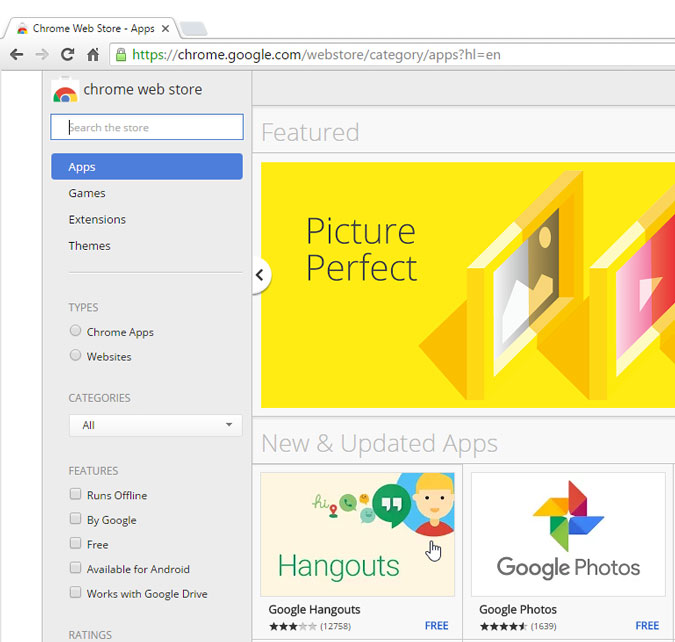
- The app page will appear with information on how the app works, user reviews, screenshots, and more. If you want to use the app, click Add to Chrome.
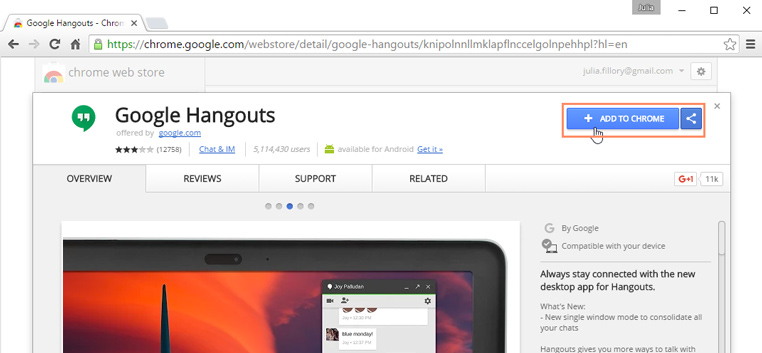
- A dialog box will appear. Click Add app to install the app.
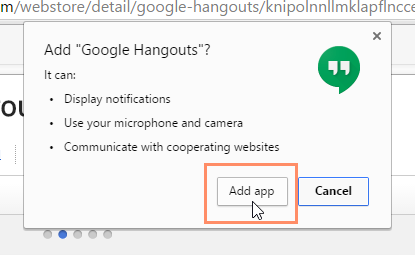
- The Apps page will appear with the installed app. Click the icon to start the app.

- Depending on the app, it will open in either a new tab or window.
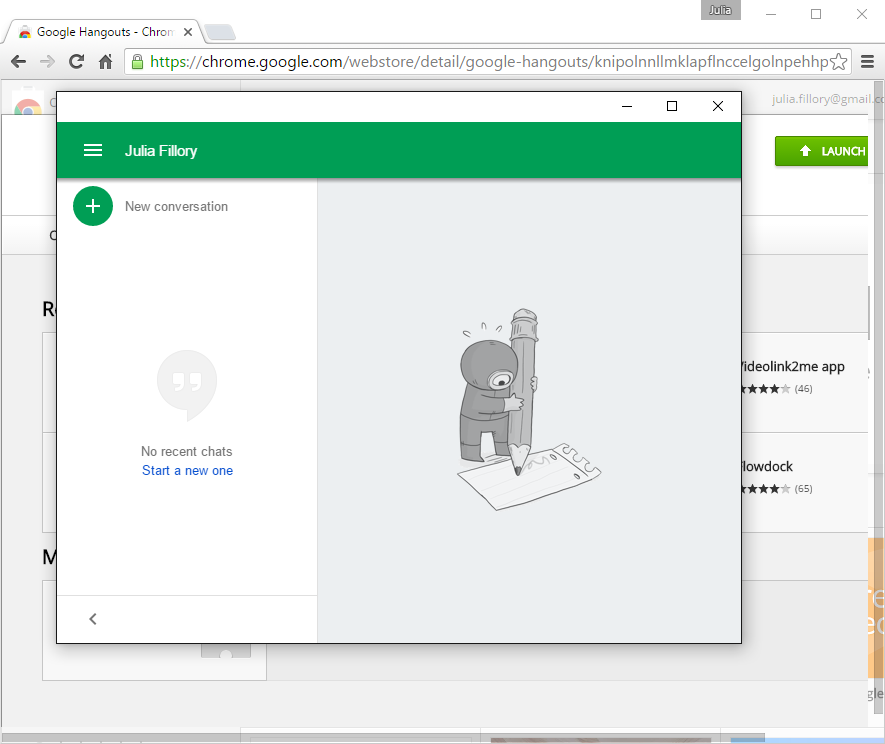
To rearrange or delete an app:
You can view, open, organize, and delete your apps from the Apps page.
- To access the Apps page, click the Apps button on the bookmarks bar. The Apps button also appears on the New Tab page.
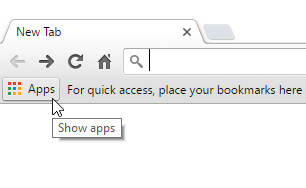
- To rearrange your apps, click and drag an icon, then release the mouse when you’re ready to place the app. This might be helpful if the Apps page is beginning to feel cluttered.
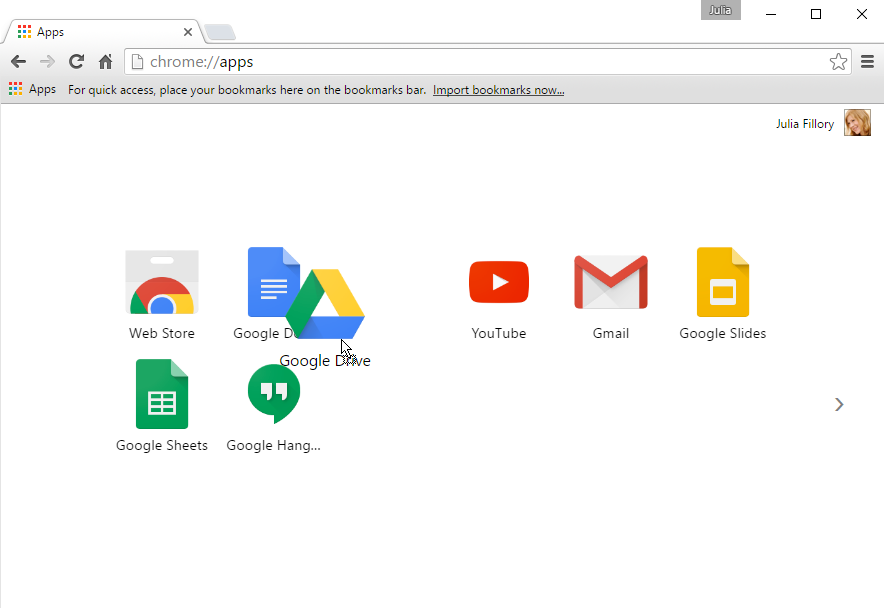
- If you want to delete an app, right-click the icon, then select Remove from Chrome from the drop-down menu. You can also delete an app by clicking and dragging the icon to the trash can in the lower-right corner.
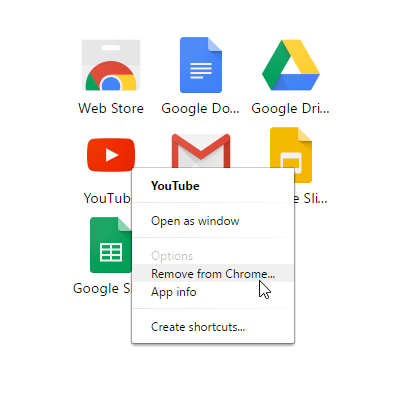
Extensions
Extensions can add additional features to the browser. For example, they can block advertisements, share a page with your social network, and much more.
To install an extension:
- Navigate to the Chrome Web Store.
- Select Extensions in the left navigation pane.
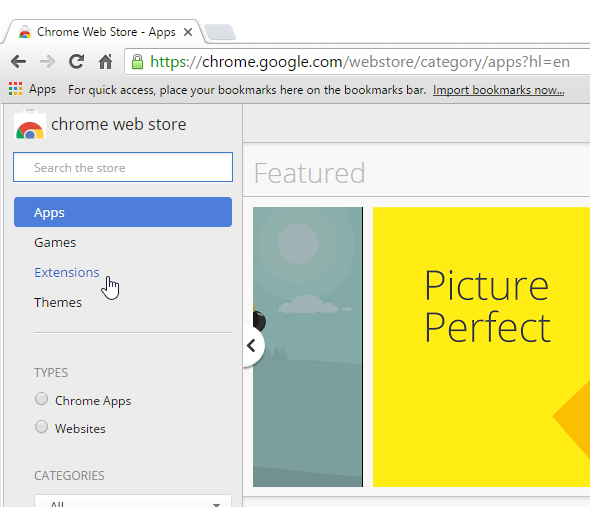
- A page of different extensions will appear. Click an extension to learn more about it.
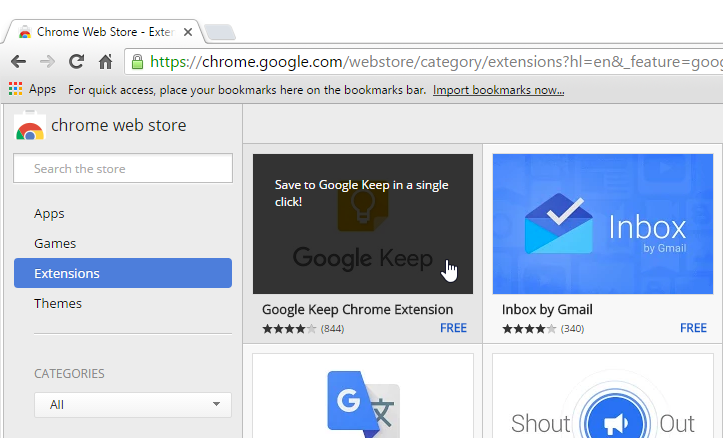
- The extension page will appear with information on how the extension works, user reviews, screenshots, and more. If you want to use the extension, click Add to Chrome.

- A dialog box will appear. Click Add extension to continue.
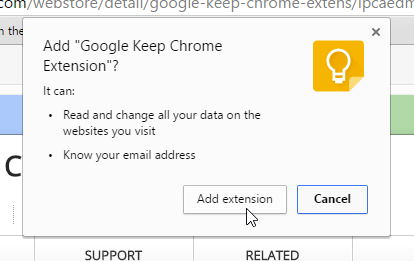
- The extension will be installed. The extension’s icon will appear in the top navigation bar. Note that some extensions work in the background and will not appear in the navigation bar.
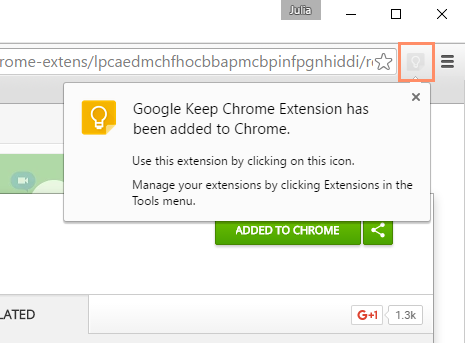
- To use an extension, click the icon while viewing any page. In this example, the extension allows us to save websites for easy access later.
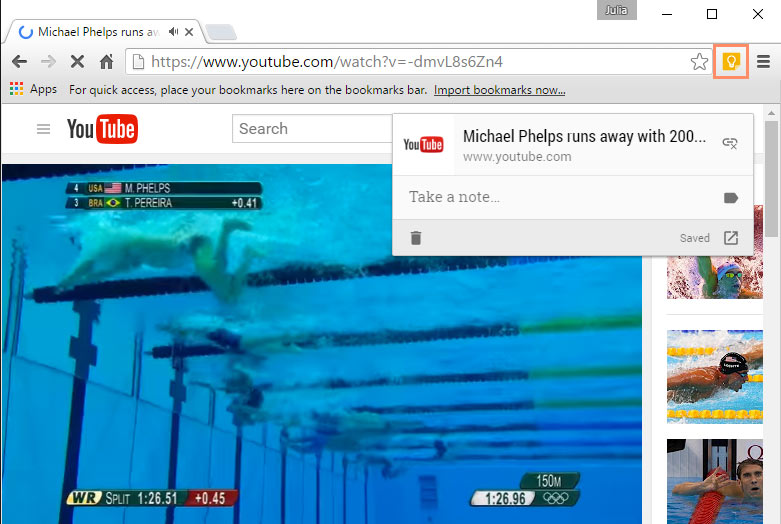
To remove an extension:
- Click the Chrome menu in the top-right corner of the browser, then select Settings.
- The Settings tab will appear. Select Extensions in the left navigation pane.
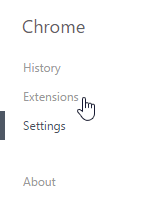
- A list of installed extensions will appear. Locate the one you want to remove, then click the trash can icon to delete it.

- A dialog box will appear. Click Remove to confirm.
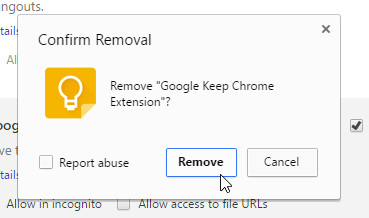
- The extension will be removed from Chrome.
Themes
If you’d like to change the look and feel of Chrome, you can add a theme from the Chrome Web Store. Some themes simply change the color of the Chrome window, while others add background pictures to the entire browser. Adding a theme is as simple as installing an app or extension, so there’s no harm in trying one out. However, we recommend using the default theme because your tabs can become difficult to read with some of them.
To install a theme:
- Navigate to the Chrome Web Store.
- Select Themes from the left navigation pane.
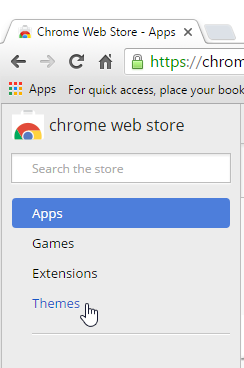
- Previews of different themes will appear. Click a theme to learn more about it or install it.
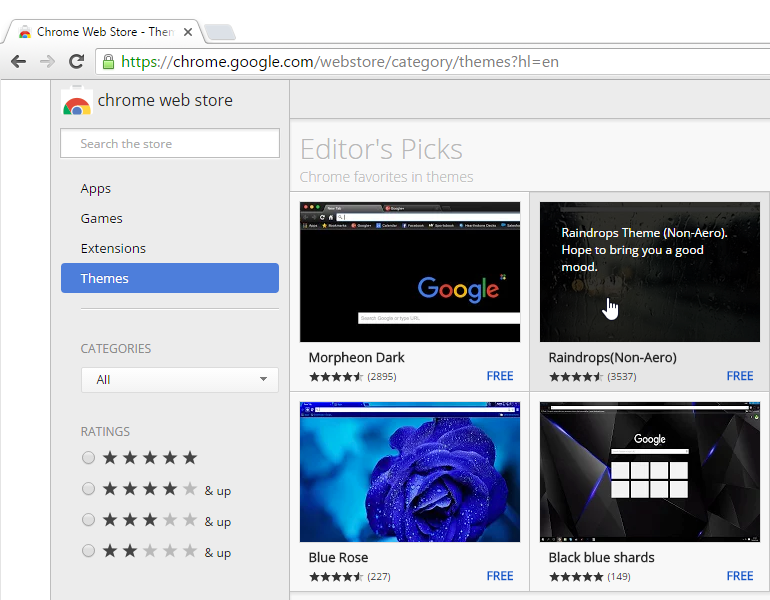
To remove a theme:
If you find that you don’t like a theme after you’ve installed it or you’d like to return to the default Chrome theme, you can remove the theme.
- Click the Chrome menu in the top-right corner of the browser, then select Settings.
- The Settings tab will appear. Locate and select Reset to default theme.
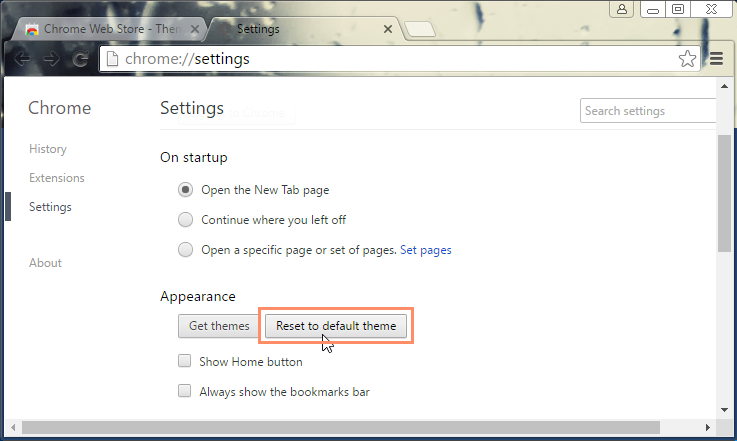
- The theme will be removed from Chrome.

